How to DIY install crown molding and faux wainscoting
Instead of allowing myself a restful holiday break this year, I followed my nose to Home Depot and conned Stephen into overhauling our dining room.
Here’s the backstory: Since we moved into our condo 6 months ago, the dining room had become something of a warehouse for random crap. This was tragic because it’s a beautiful room with a large bay window, view of our deck and a cutout wall that looks into the kitchen and vice versa. I had just been feeling totally uninspired though, and knew it would take more than a coat of paint and a lazy weekend to get it up to par. Here are a couple of photos from the realty website when we bought the condo.
Before:
And what it turned into on our watch:
Do you love our classy makeshift ironing board? My only defense is we had just moved in. Hopefully the lone empty bottle of Veuve on the windowsill balances the scale a little.
You understand the need, right? Having a week off for the holidays provided the perfect opportunity to finally transform the space into something lovely. I started a board on Pinterest (obviously) to record some of my favorite looks. Here are a few:
Source: lisasherryinterieurs.com via Katie on Pinterest
Source: img.hgtv.com via Katie on Pinterest
Source: blog.amerifirst.com via Katie on Pinterest
As you can see, I was loving the dark walls. I did some research, and with the help of this blog and a few YouTube videos, we installed crown molding, chair rail, faux wainscoting panels and painted the walls a beautiful dark blue and crisp white.
After:
After!!! Notice Paddington loves the room.
The night we finished.
Side by side before and after. Please excuse my lack of wide angle lens.
We completed the project in about 4 days, if you include caulk and paint-drying time. You could definitely do it faster if you knew what you were doing to begin with (which we did not!). Want the step-by-step details? Read on!
Disclaimer: I am by no means a professional. This was purely a DIY project, and these are my opinions and recommendations based on my experience. If you want professional instructions, consult a professional.
Painting
Supply list:
- 1 gallon of paint in your “upper” wall color (one gallon is probably enough for an average sized room)
- 1-2 gallons of paint in your “lower” wall color (you will use this on the moldings too, if you choose white)
- Roller + extension handle
- Angle brush
- Painter’s tape
- Paint tray
We used the following colors of paint in the room:
Benjamin Moore “Gentleman’s Gray”
and
Behr Premium Plus Ultra Pure White Eggshell Interior (Paint & Primer in One)
1. The great thing about knowing you’re going to be putting up crown molding and wainscoting? You don’t have to worry about painting all the way up to the ceiling, or making a perfect line where the chair rail will go. Just make sure you paint low enough so the chair rail will cover the paint line, and high enough so the crown will cover the paint line near the ceiling.
2. You might want to tape off your “upper” color at the chair rail line if you plan to paint the “lower” color the same day–we did this because we painted the navy blue and white at the same time.
3. Also, save yourself a ton of time by painting your crown molding, chair rail and wainscoting pieces before you attach them to the wall. That way, you just have to do touch ups.
Crown Molding
Supply list:
- Molding: Approximately the length of each wall + 10% (in my opinion)
- Miter saw with bevel adjustment option: You can rent this from Home Depot on an hourly or daily basis for approx. $35-40/day. We were lucky enough to borrow one from a friend.
- Nail gun: You can also rent this from Home Depot by the hour or day. It’s about $20/day. Get a cordless one.
- 2″ finishing nails
- Safety glasses
- Protractor
- Putty
- Caulk
- Caulk gun
- Painter’s tape
- Wood file (optional but nice to have–we used it several times to make slight adjustments to our cuts)
- Tape measure
- Pencil
- Ladder (if needed)
- A helping hand. I’m not sure an amateur would be able to do this alone. But feel free to prove me wrong!
Purchasing supplies at Home Depot, or Home Despot, as Stephen likes to call it.
I will confess: I thought this would be a breeze. I watched approximately 1.2 million YouTube videos on how to install crown, got all the tips and tricks…and we still screwed it up the first time! Hopefully you can learn from our experience and save yourself the headache of having to restart your project (bear with me if you already knew these facts about crown molding–I wish I had known when we made the first cut).
1. Measure your room and add about 10% — this is how much length of crown molding you should buy. This will give you extra pieces in case you make a cut too short, or mess up an angle. We needed 52′ for the dining room we did, so we ended up purchasing a pro-pack from Home Depot, which gives you five 12-foot pieces for $45. That gave us 60′, which was enough extra to make up for any mistakes.
2. IMPORTANT TIP! Crown molding comes in basically three styles: 38 vs. 45 vs 52 degrees. Here’s an illustration of the different types and how they sit on the wall:
Image via http://cutandcrown.wordpress.com/
Why is this important? Because it affects the way you will cut the crown molding. We didn’t realize we purchased 38-degree crown (I had no idea there was a distinction), and therefore we ended up cutting the angles wrong and had to start over. So when you go to the store to buy the wood, take note of which type of crown you’re purchasing. Note that 38-degree crown is optimal for lower ceilings, vs 52-degree crown, which is designed for high ceilings. We have 9′ ceilings and the 38-degree crown looks just fine.
3. Know how to set your miter saw to make the first cuts. BOOKMARK ALERT: This chart will be your lifesaver as you do this project and will save you tons of time. It tells you at what setting you need to adjust the bevel (blade side) angle and miter (table side) angle of your saw, based on whether you have 38-, 45-, or 52-degree crown (see #2), as well as the wall angle of your corner (not all corners are 90 degrees!). You will use this when cutting inside corners:
Example of an inside corner. Image via http://www.howtoinstallcrownmoulding.com/
4. Take it a wall at a time. The adage is measure twice, cut once? I say measure ten times, cut once.
5. When you’re ready to attach your first piece to the wall, nail in the center of the piece first and work your way towards the corners. Stop nailing at about 18 inches from the corner, because this allows you to finesse the angle when you put the adjoining piece on. Once you have those pieces set, you can nail in the corners.
Example of nailing in the center first, posted with Stephen’s permission 🙂
6. IMPORTANT (HAPPY) TIP! If your corner pieces don’t connect perfectly, don’t fret. Caulk covers a world of mistakes. As long as most of your corner pieces are adjoining, or even 1/4 of an inch or so off, you can most likely caulk it and no one will ever know. We agonized over two angles that were a bit a lot off, and once we caulked those corners, you couldn’t tell even if you look closely.
7. Which brings me to: caulking and puttying! Once all your pieces are up on the wall, it might look like a battlefield up there with all the nail holes. Not to worry! Grab your putty and cover the nail holes. You’ll be amazed at how much that transforms the look of the room.
8. But wait, it gets better! Caulking, while extremely messy (have loads of paper towels on hand–trust me you can’t have too many), really completes the project. Tape off the line where you are going to caulk. Here’s a good tutorial with photos on how to do that. The key to the caulk gun, from what we found, is to try and run it along your seam in one fell swoop. Then just use your finger to smooth it out and discard the excess. Peel off the tape immediately. Simple as that.
Faux wainscoting (Part 1 – chair rail)
Supply list:
- All of the crown molding materials
- Length of your wall + 10% = approx. amount of chair rail you will need (in my opinion)
- Chalk line
- Level
Definition of faux wainscoting: Instead of putting up wainscoting panels, paint the lower portion of your wall white, add chair rail and wainscoting “frames” or “boxes,” and voila, the look of wainscoting without the hassle. Part one is a step-by-step for adding the chair rail:
1. Take a deep cleansing sigh of relief, because compared to the crown molding, this is like putting Legos together.
2. Use a chalk line and a level to mark where your chair rail should sit. Ours was (I think) about 36″ above the floor. This is totally your personal preference.
3. Rejoice, because cutting the inside corners of the chair rail does not require the extra special miter chart. Since this is sitting flat against the wall, you will simply cut adjoining 45 degree angles (assuming you have a 90 degree angle on your inside corners).
4. Use a level to make sure your boards are straight. Again, I’d recommend to start nailing at the middle of the panel and work your way toward the corners. Stop nailing about 18 inches from the corner. This allows you to finesse the two boards and get the best fit.
5. Once the chair rail is up, putty the nail holes and caulk. Touch up with paint.
Faux wainscoting (Part 2 – wainscoting boxes)
Supply list:
- All of Faux Wainscoting Part 1 materials
- Total length of boxes + 10% = approx. amount of molding you will need (see step 1 below for more). This is the molding we used.
1. This takes a bit of planning to measure out your room. First choose how many wainscoting “boxes” you want on your longest wall. We chose to leave 4-inch spaces in between each box and from either side of the wall. We also placed the boxes 4 inches below the bottom of the chair rail and 4 inches above the top of the baseboard. Based on that and the length of the wall, we determined the dimensions of each box.
For example, say your wall is 100 inches long and you want 3 boxes on the wall. Subtract 16 inches to account for the spaces in between each box and from either side of the wall. That leaves you with 84 inches. Divide by 3 and your boxes will each be 28 inches long. For the visual learners, here’s a diagram:
Most rooms are not a perfect square, so likely you will have different wall lengths, and hence different amounts of boxes on each wall. IMPORTANT TIP! As you lay out the map of the room, do not change the spacing of the boxes to fit the wall, change the box size. If the spacing is inconsistent, the room will look like a hot mess. For example, if you have a shorter wall, you might want to do 2 boxes (instead of 3) of different width, keeping the 4-inch spacing between the boxes and the wall.
2. Make a cut list of all the pieces you will need in each size. Luckily, your height measurements will stay consistent. I would recommend making all your cuts first, and writing the measurement on the back of each piece. Then you can take all your pieces and easily assemble the boxes in your room.
3. Use a chalk line and a level to mark the top of each box and the bottom of each box. Use your tape measure and level to draw the boxes on the wall with a pencil.
4. Nail on your pieces, using the level to ensure they’re straight, working your way around the room.
5. Putty and caulk.
6. Touch up any nail holes or scratches with paint.
7. GO CRAZY. Because you just finished the project, and your room looks AMAZING!!!
I really hope this was helpful. Please feel free to ask any questions in the comments section, and I’ll respond as promptly as possible. Thanks for reading!
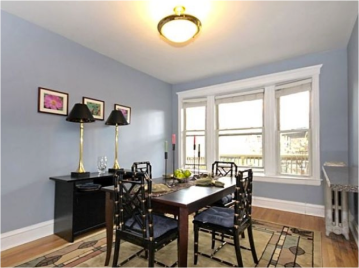
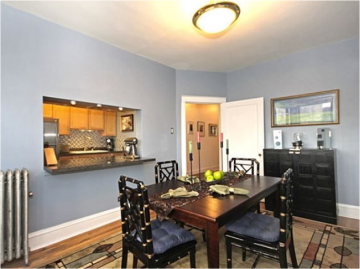
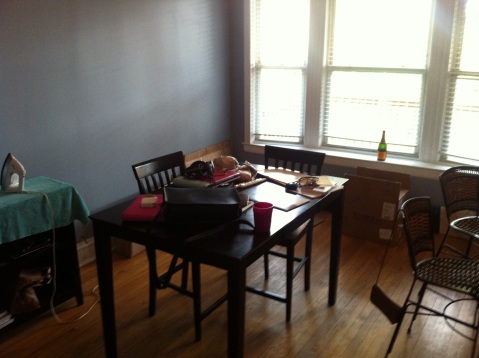



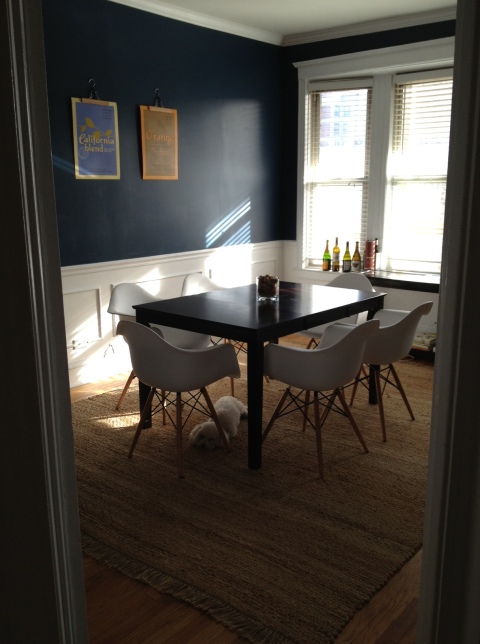
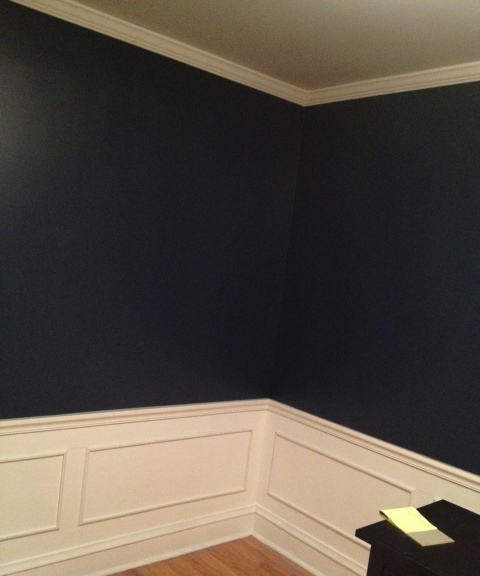
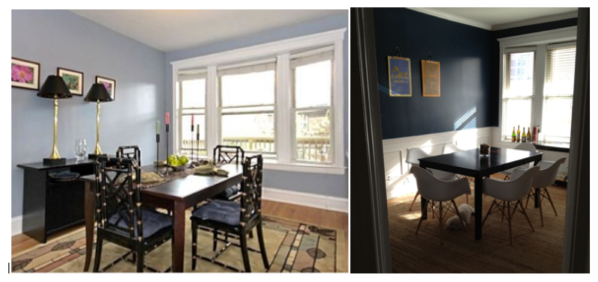


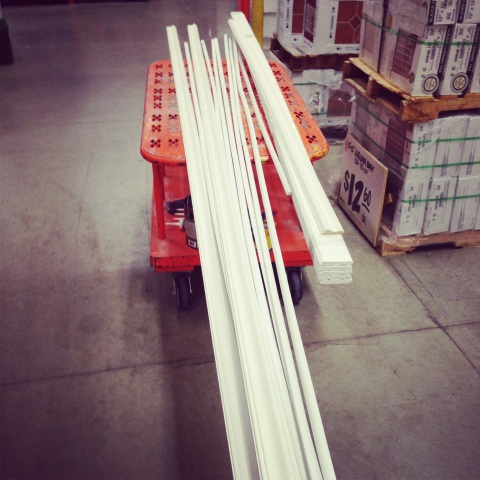
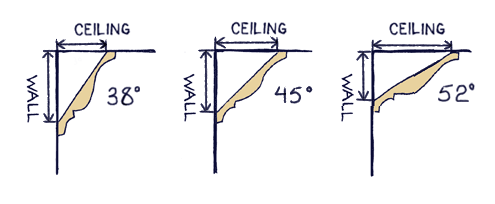
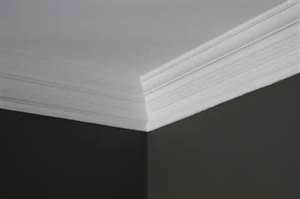

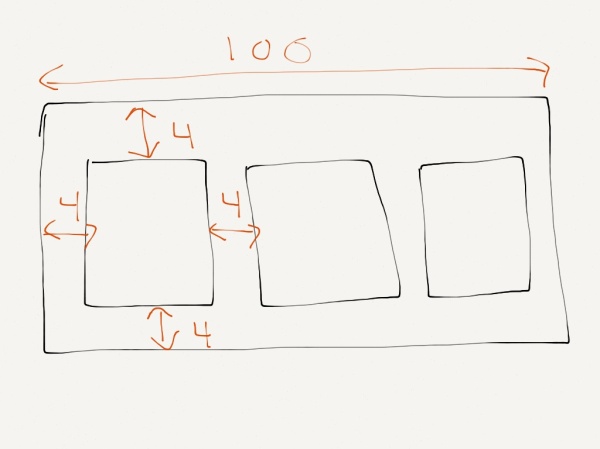
Thank you for all these tips. My husband and myself are tackling this project right now…If not for your directions, then I would still be at step 1…so Thanks Again!
Awesome, so glad to hear! Let me know how it goes 🙂
Hi There are the boxes easy to make ? can you buy them pre made ?
thanks looks amazing 🙂
Hi there, I have seen a few tutorials where folks used large photo frames for the boxes, but honestly they’re really easy to make. All you need is a basic miter saw.
Do you guys add molding to the top of the baseboards?
Hi Anthony, thankfully we already had beautiful baseboards so we just left them as is. 🙂
Hi there. I am loving this blog post. I do have a question as I am in the middle of the same project myself. Any advice on how to handle the molding for the frames if a socket is in the way? If I leave a different amount of space between frames, the chair rail and baseboard, I will run into the same problem on another wall. Any advice would be much appreciated! Not sure I should leave a gap. And if I look closely at your picture, I think you did run into the same issue…but it’s not too clear. Thanks!!
when u have an inside corner, did u leave 4 inches from the corner to the side of the closest box on each wall, or 2 inches in either direction of the corner so its still a total of 4 inches “between boxes” even though they are on different walls
The vertical sides of the boxes are not going to be over a stud. How do you attach them to the wall which is wallboard and nailing into it cannot be used to firmly attach molding?
when applying the moulding how do you deal with where they meet at the corner?